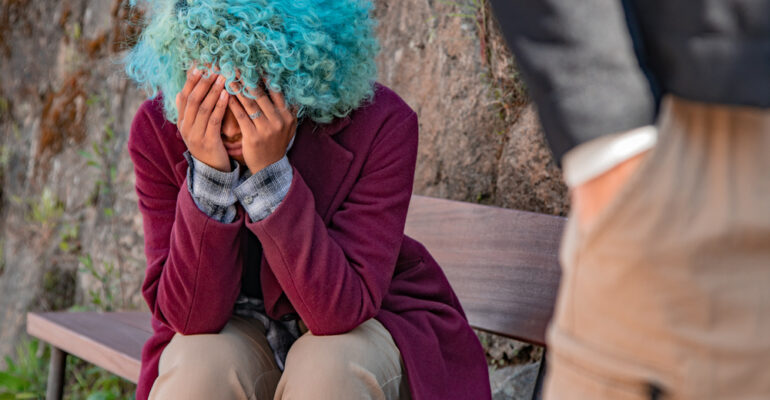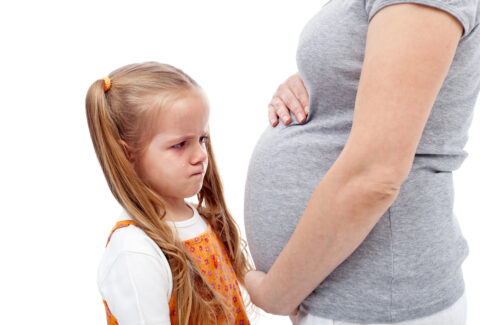Inner Child Wounds and Fear of Abandonment: Understanding, Healing, and Growing Beyond

Inner Child Wounds and Fear of Abandonment: Understanding, Healing, and Growing Beyond
Abandonment wounds are some of the most powerful and enduring wounds that we carry. For many, these wounds[1] trace back to early childhood experiences when needs for love, security, and connection went unmet. Whether these experiences were due to a lack of emotional presence, physical absence, or other forms of neglect, the pain from feeling left behind can become deeply ingrained. Over time, this fear of abandonment shapes our beliefs, relationships, and self-perception, often holding us back from fully engaging with life and the people we love.
Understanding inner child wounds[2] and the impact of abandonment is the first step toward healing and, ultimately, transformation. When we can address these wounds with compassion and intention, we begin to build a more secure foundation within ourselves. In doing so, we empower the adult self to live with greater confidence, connection, and resilience.
Understanding Abandonment and Inner Child Wounds
The inner child refers to the part of our psyche that holds the emotions, memories, and experiences from childhood. When we experience abandonment at a young age, whether through neglect, a loss of a caregiver, or emotional unavailability, these experiences leave a mark.[3] Children are naturally egocentric, meaning they interpret experiences through a lens that centers on themselves. If a child feels abandoned, they may believe that they are inherently unlovable, unworthy, or not “good enough” to be cared for.[4] These feelings often carry into adulthood, deeply influencing relationships and self-worth.
As adults, we may know rationally that we are worthy of love and connection, but our inner child—the part of us still carrying those childhood wounds—can drive fear, insecurity, and anxiety around being abandoned again. When triggered, this part of us may cling tightly to relationships, withdraw out of fear, or act out of jealousy and insecurity.
How the Fear of Abandonment Affects Our Lives
Fear of abandonment[5] affects many areas of life, but it is often most visible in close relationships. The following are some of the most common ways abandonment wounds influence adult life:
- Clinging to Relationships: A fear of being left alone may lead to a strong desire to hold onto relationships, even when they are unhealthy. People with abandonment wounds may fear confrontation or avoid setting boundaries, believing that doing so might drive others away.
- Jealousy and Possessiveness: The fear of losing a loved one can create feelings of jealousy, distrust, and possessiveness.[6] This often manifests as needing constant reassurance or feeling threatened by the presence of others in a partner’s life.
- Self-Sabotage: Abandonment wounds can lead to self-sabotaging behavior, where we subconsciously create distance or even end relationships to avoid the potential pain of being left. This can also look like rejecting others before they have a chance to reject us.
- Low Self-Worth: Those with abandonment wounds often struggle with feelings of inadequacy and worthlessness. They may believe that they are not lovable or valuable enough, leading to low self-esteem that affects both personal and professional aspects of life.
- Dependency on External Validation: A reliance on others for validation and a need for constant affirmation often arise from abandonment wounds. This can lead to people-pleasing behaviors and sacrificing one’s needs for the approval of others.
Recognizing these patterns is crucial for healing. When we see how the fear of abandonment affects our behaviors, we can take steps to understand and address it with compassion.
Healing Abandonment Wounds: Reconnecting with the Inner Child
Healing abandonment wounds starts with reconnecting with the inner child—the part of ourselves that was hurt, neglected, or left alone. Reparenting our inner child by providing comfort, love, and stability is a powerful way to meet the needs that were unmet in childhood. Here are some exercises to facilitate this healing process:
Exercise: Inner Child Dialogue
- Find a quiet space and take a few deep breaths to center yourself.
- Close your eyes and imagine yourself as a young child, sitting in front of you. Picture yourself as vividly as you can.
- Engage in a conversation with this child. Acknowledge their fears, their sadness, and their pain. Tell them, “I am here for you. You are safe, and you will not be left alone.”
- Ask your inner child what they need to feel secure and loved. Allow any feelings or thoughts to surface, and respond with kindness and reassurance.
This practice reinforces that your inner child is no longer alone. By becoming the source of comfort and security they needed, you begin to heal the old wounds and create a sense of safety within.
Building Self-Compassion and Self-Worth
Abandonment wounds often lead to a fragile sense of self-worth, which makes healing challenging. Developing self-compassion[7] allows us to become kinder and more forgiving to ourselves, reinforcing the belief that we are worthy of love and care. Here’s an exercise to cultivate self-compassion:
Exercise: Self-Compassionate Letter Writing
- Write a letter to yourself as if you were writing to a dear friend who has been hurt. Acknowledge the pain of abandonment and validate the emotions you feel.
- Offer yourself words of encouragement, empathy, and love. Reassure yourself that you are worthy of connection, trust, and happiness.
- Read this letter aloud or keep it somewhere you can revisit when you need a reminder of your worth and resilience.
This practice helps you internalize a compassionate, supportive voice. Over time, as you continue to build self-worth, your fear of abandonment will begin to lessen.
Learning to Trust Yourself
Abandonment often leads to a distrust of others, but more critically, it can lead to a distrust of oneself.[8] Healing requires learning to trust our own ability to navigate relationships and care for ourselves.
Exercise: Self-Trust Practice
- Make small commitments to yourself each day and follow through. These can be as simple as “I will drink a glass of water in the morning” or “I will take a five-minute break at noon.”
- Keep a journal to record each commitment and acknowledge yourself for following through. Building self-trust takes time, and it’s important to celebrate each small step.
- As your self-trust grows, gradually expand these commitments to include larger goals. Remember that the more you trust yourself, the more resilient you’ll feel in relationships, knowing that no matter what happens, you have your own support.
Redefining Relationships and Setting Boundaries
For those with abandonment wounds, boundaries can feel dangerous, as if they might lead to rejection or disconnection.[9] However, boundaries are essential for healthy relationships. They allow us to protect our well-being and communicate our needs, creating a secure space where we can connect without fear.
Exercise: Practicing Boundaries
- Start by setting small, manageable boundaries. For example, if you need time for yourself, communicate this gently to others by saying, “I need a few minutes to recharge.”
- Gradually build up to larger boundaries, such as expressing your needs or saying “no” to things that do not serve you.
- Recognize that setting boundaries does not mean you’re pushing people away. It’s a way of fostering respect, trust, and balance within relationships.
Setting boundaries helps you overcome the fear that boundaries will result in abandonment. Instead, you’ll come to see that healthy boundaries foster connection based on respect and mutual care.
Conclusion: Transforming Fear of Abandonment into a Secure Sense of Self
Healing abandonment wounds is a journey of returning to oneself, of finding the love, security, and compassion that were missing in the past. It’s not an easy process, but it’s profoundly liberating. By reconnecting with your inner child, cultivating self-compassion, and building trust within yourself, you can transform the fear of abandonment into a sense of inner security and self-worth.
As you heal, you’ll begin to see that relationships no longer feel like a fragile lifeline but a place of mutual support and joy. The love and care you show your inner child become the foundation for healthier, more fulfilling relationships with others.
Remember, you are capable of providing yourself with the stability and love you need. With each compassionate act toward yourself, you honor the wounded child within and create a brighter, more resilient future—one where you no longer live in fear of abandonment but thrive in a space of self-love and self-assurance.
Are you ready to master the skills to help your clients heal their childhood wounds, so they can finally find the peace of mind they’ve been searching for? Join our upcoming certificate course, Healing the Past: Overcoming Childhood Wounds for Emotional Freedom, starting Wednesday, November 20, 2024, and running through December 18, 2024. Register today and take the first step toward transforming lives.
[1] Parker, Callie. Childhood Trauma and Recovery: Healing Your Inner Child. Callie Parker, 2024.
[2] Potter, Paula M., ed. Healing Inner-Child Wounds: Breaking Life-Commandments. Lulu. com, 2007.
[3] Anderson, Susan. Taming Your Outer Child: Overcoming Self-sabotage and Healing from Abandonment. New World Library, 2015.
[4] Rochlin, Gregory. “The dread of abandonment: A contribution to the etiology of the loss complex and to depression.” The Psychoanalytic Study of the Child 16.1 (1961): 451-470.
[5] Gyngell, Allan. Fear of abandonment. Black Inc., 2021.
[6] Sorensen, Bernice. “Life-Stories and Life-Stages.” Only-Child Experience and Adulthood. London: Palgrave Macmillan UK, 2008. 131-156.
[7] Neff, Kristin D. “Self-compassion: Theory, method, research, and intervention.” Annual review of psychology 74.1 (2023): 193-218.
[8] Foley, Richard. “Self-trust.” The Routledge Handbook of Trust and Philosophy. Routledge, 2020. 231-242.
[9] Shin, Jihye, Kuem Sun Han, and Hyun Jeong Shin. “Rejection Sensitivity: A Concept Analysis.” Journal of Korean Academy of psychiatric and Mental Health Nursing 33.3 (2024): 253-261.






